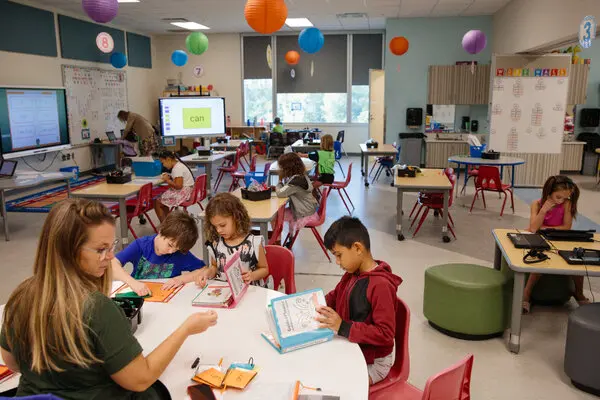The United States has long been a leader in international classlink lcisd education, attracting students from around the globe to its universities and institutions. However, in recent years, there has been a growing recognition of the need for a more coordinated and strategic approach to international education. This article explores the evolving U.S. international education strategy, focusing on its objectives, challenges, and the collaborative efforts among various stakeholders to enhance the nation’s role in global education.
Historical Context
International education in the U.S. has traditionally been characterized by a decentralized approach, with individual institutions making their own decisions regarding international partnerships and student recruitment. This lack of a cohesive national strategy has led to a decline in the U.S. share of international students, falling from nearly 60% in 2000 to around 40% today
In contrast, countries like Australia, Canada, and the UK have implemented national strategies that effectively promote their educational offerings abroad.
The Need for a National Strategy
The absence of a unified national strategy has prompted various organizations and stakeholders to advocate for a more coordinated approach. The U.S. for Success Coalition, formed by prominent international education organizations, aims to stimulate collaboration among educational institutions, government entities, and other stakeholders to develop a comprehensive strategy for international education
Current U.S. International Education Strategy
The U.S. government has recently updated its international education strategy through initiatives led by the Department of Education and the Department of State. The current framework emphasizes three interrelated objectives:
- Increase Global and Cultural Competencies: This objective focuses on equipping U.S. students with the skills necessary to thrive in a globalized world.
- Learn from Other Countries: By engaging with international educational systems, the U.S. aims to strengthen its own educational practices.
- Active Education Diplomacy: This involves using educational exchanges as a tool for advancing U.S. diplomatic goals
Strategic Approaches
The updated strategy outlines several strategic approaches to achieve these objectives:
- Promoting U.S. as a Top Study Destination: Efforts are being made to market U.S. educational institutions globally and attract more international students.
- Enhancing Study Abroad Opportunities: Increasing participation of American students in study abroad programs is crucial for fostering cultural exchange and global understanding.
- Strengthening Institutional Partnerships: Collaborative efforts between U.S. institutions and foreign counterparts are encouraged to facilitate knowledge sharing and innovation
Challenges Facing U.S. International Education
Despite these efforts, several challenges hinder the effectiveness of the U.S. international education strategy:
Competition from Other Countries
Countries like Canada and Australia have implemented attractive policies for international students, including work opportunities post-graduation, which have made them more appealing destinations compared to the U.S.
.
Domestic Policy Gaps
The lack of coherent federal policies supporting international education has left many institutions navigating the landscape independently, leading to inconsistencies in recruitment strategies and support services for international students
Impact of Global Events
The COVID-19 pandemic significantly disrupted international student mobility, leading to declines in enrollment numbers across many U.S. institutions
Ongoing geopolitical tensions also affect student perceptions of safety and stability in the U.S.
Collaborative Efforts for Improvement
In response to these challenges, various coalitions and organizations have come together to advocate for enhanced coordination and policy development in international education.
The U.S. for Success Coalition
This coalition aims to create a proactive national strategy that includes:
- Increasing diversity among international students.
- Expanding institutional capacity to welcome and support these students.
- Developing pathways for graduates to work in the U.S.
Recommendations from NAFSA
NAFSA: Association of International Educators has called for comprehensive federal action that includes setting targets for increasing both inbound and outbound student mobility
Their recommendations include:
- Establishing clear policies that support institutional partnerships.
- Promoting effective administrative structures within higher education institutions.
- Encouraging global higher education partnerships that facilitate collaborative research and faculty mobility.
Future Directions
Looking ahead, several key areas will be critical for shaping the future of U.S. international education:
Policy Development
A formalized national strategy is essential for addressing existing gaps in policy and ensuring that all stakeholders are aligned towards common goals
The White House’s involvement in crafting this strategy would be pivotal.
Emphasizing Economic Value
Recognizing international education as an economic driver is crucial; it not only contributes significantly to local economies but also enhances America’s competitive edge globally
Leveraging Technology
Utilizing technology for virtual exchanges and partnerships can help broaden access to international experiences without necessitating physical travel
Conclusion
The U.S. international education strategy is at a critical juncture, requiring concerted efforts from government agencies, educational institutions, and advocacy groups to establish a cohesive framework that addresses current challenges while promoting global engagement. As the world becomes increasingly interconnected, enhancing international education will be vital not only for individual learners but also for America’s position on the global stage.
